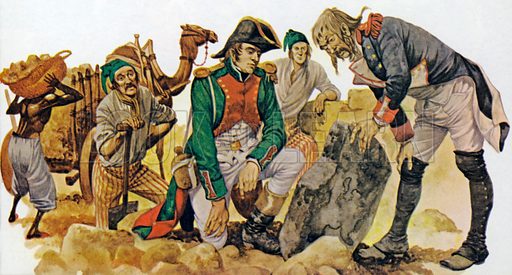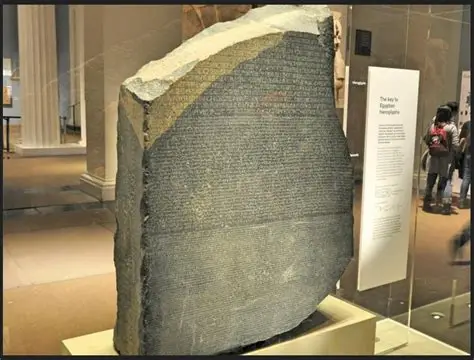15 July: The discovery of the Rosetta Stone in 1799, A treasure that unlocked the secrets of Ancient Egypt.
By Ayush Sachan
History is a king of a thing that sometimes hinges on the most unexpected moments, and the discovery of the Rosetta Stone in 1799 is one of those moments in the dusty ruins near a small Egyptian town called Rosetta (modern-day Rashid), a group of French soldiers stumbled upon a dark slab of stone covered in mysterious inscriptions. They had no idea what they might have stumbled upon, they had just uncovered the key to resurrecting an entire lost world.
that stone would be known as the Rosetta Stone today, and would become one of the most important archaeological finds in human history. Thanks to it, scholars finally cracked the code of ancient Egyptian hieroglyphics, opening up 3,000 years of forgotten history.

But before that lets understand some history about it
The late 18th century was a time of fierce European rivalry. When Napoleon Bonaparte invaded Egypt in 1798, he didn’t just bring soldiers he brought scientists, engineers, and artists, determined to study and document everything they found.
Why? you may ask well its because, according to Napoleon, Conquest wasn’t only about land. It was also about knowledge, prestige, and proving the superiority of European powers. Napoleon wanted to dazzle the world by revealing the mysteries of ancient Egypt. In this mix of military ambition and intellectual curiosity, the stage was set for a moment that would rewrite our understanding of the past.
On 15 July 1799, French soldiers under Captain Pierre-François Bouchard were reinforcing a fort near Rosetta when they noticed a large slab partially buried in the dirt. It was made of granodiorite and measured about 4 feet long. But what caught their eye was the writing, three bands of carefully carved text, each in a different script.
Realizing it might be of some importance, they decided to send it to scholars traveling with the army. And kit did not take, the scholars to recognize the scripts as Greek, Demotic (a later Egyptian script), and Egyptian hieroglyphics. It was a bilingual and even trilingual, inscription, carved in 196 BC to honor Pharaoh Ptolemy V. For centuries, Egyptian hieroglyphics had been a total mystery.
After Egypt’s ancient civilization declined, knowledge of how to read the intricate symbols vanished. Medieval scholars saw them as magical symbols; Renaissance thinkers guessed wildly. But the Rosetta Stone was different. Because the same text appeared in Greek, a language scholars could already read, it offered a possible decoder ring for the ancient language of the pharaohs.
The Rosetta Stone didn’t just solve a scholarly riddle it unlocked an entire civilization. For the first time in 1,500 years, we could read the words of Ramses II, follow the rituals of the priests at Karnak, and understand the wisdom inscribed in ancient papyri.

It also ignited the field of Egyptology, inspiring generations of archaeologists and dreamers to explore the Nile’s secrets. Today, the stone is more than a relic. It’s a symbol of how curiosity, persistence, and a bit of luck can resurrect lost worlds. It also sparks debates about colonialism and museum ethics, with Egypt repeatedly calling for its return.
The story of the Rosetta Stone is a reminder that history often waits beneath our feet, hidden in the soil, waiting for someone curious enough to look closer. One slab of rock, pulled from an Egyptian fort wall on a hot July day, ended up bridging millennia, connecting us directly to the voices of a civilization long believed silent.
